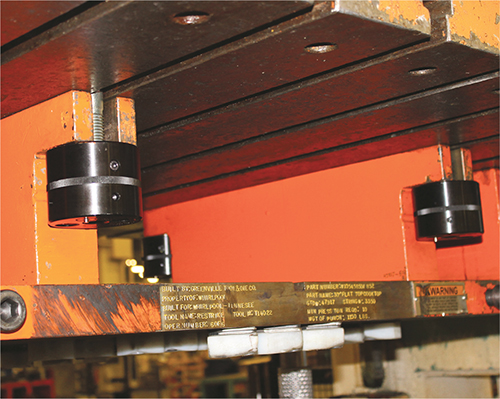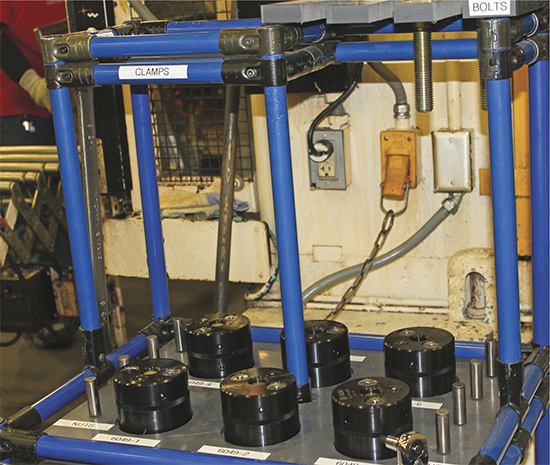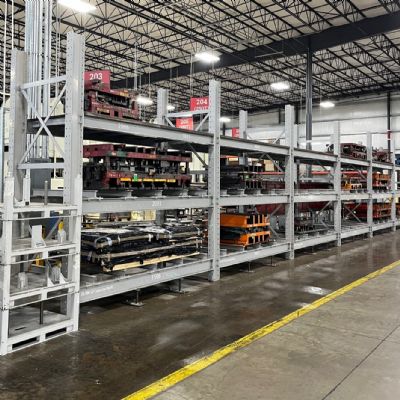Die-Clamping Solution Unearthed at FABTECH
The plant’s press-shop team took its mission to improve die-change efficiency to FABTECH 2014 in Atlanta, and struck gold at the booth of Carr Lane Roemheld Mfg. Co. That’s where Stewart and his team discovered Hilma hydromechanical clamping nuts that, when compared to traditional T-bolts, require a fraction of the torque to secure a die. Soon after returning from the exhibition, Stewart submitted a purchase order for dozens of the Hilma nuts.
“In all, we’ll invest several thousands of dollars per press to employ the hydromechanical nuts,” he shares. “And we plan to put them on every press. That’s a big investment (360 clamp nuts, rated to 22,400 lb. of clamping force, along with 360 1- by 6-in. bolts), but we expect immediate payback in terms of time savings and ergonomic advantages. The new clamping nuts have decreased our die-change times by at least 4 min. per change.” An added bonus with the new nuts: They will fit 90 percent of the facility’s dies without modification, fitting into existing die slots. And, the nuts lend themselves to a more organized die-change procedure. The project team created Creform (Greer, SC) kitting carts at each press to organize and store the nuts. In this way, the die setters have visual cues that eliminate any chance that a nut either is missing from the die (during die setting) or remaining in the die (during die removal). “Half of our dies were not designed inhouse; they came from other facilities,” adds Webb, “which created a challenge when we looked at standardizing on quick-change equipment. For example, we couldn’t find another mechanical solution, or a magnetic system, that would work with such a high percentage of our dies when taking into consideration the frequency at which we change dies, and our vast range of die sizes (as large as 9 ft. long and 4 ft. wide).” No Chance for Error The plant’s mission to add the hydromechanical nuts to its presses kicked off this past May when it added 72 of the nuts to the stainless line, another 72 sets were added to a wrapper line at the end of June, and Stewart filed another purchase order to outfit more presses by the end of September. “The die setters love the new clamping nuts,” Stewart says, “and I can’t wait to get them on all of the presses. We’re eliminating opportunities for die damage, and we’re reducing our changeover times.

Using the new clamping nuts, which fit in 90 percent of the facility’s dies without requiring modification, couldn’t be simpler. The setter slides the T-bolts and clamping nuts into the slots on the press bed, then hand-tightens the nuts to secure them against the die. He then makes one or two turns with a 6-in. ratchet to reach the required torque.
See also: ROEMHELD North America
Technologies: Tooling











 Podcast
Podcast